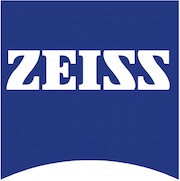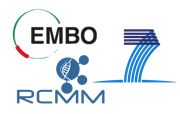Rainer Pepperkok
 Rainer Pepperkok started his scientific career at the EMBL Heidelberg developing automated microinjection and imaging techniques in the group of Wilhelm Ansorge. He received his PhD in Cell Biology in 1992 at the University of Kaiserslautern investigating the role of Casein Kinase II in cell proliferation and differentiation. During this time Rainer Pepperkok also has made significant scientific contributions to the field of cell cycle regulation. As a post-doc at the University of Geneva Switzerland in the group of Thomas Kreis he made significant contributions to the understanding of vesicular coat proteins in membrane trafficking in the early secretory pathway and was amongst the first to use GFP technology and live cell imaging to follow ER to Golgi membrane traffic in living cells. From 1996 to 1998 he has been heading the light microscopy laboratory at the Imperial Cancer Research Fund in London. During this time he discovered and characterized new COPI-independent Golgi to ER transport routes of toxins and Golgi enzymes. Since 1998 he is head of the Advanced Light Microscopy Facility and teamleader in the cell Biology Cell and Cell Biophysics Unit at EMBL in Heidelberg, Germany. Since then he has developed quantitative microscopy based approaches to study membrane traffic in the early secretory pathway with a particular focus on high content screening approaches to conduct large-scale functional analyzes. These approaches have identified numerous new proteins involved in ER to Golgi transport of different cargo molecules. Rainer Pepperkok is one of the founders of the European Light Microscopy Initiative (ELMI) and presently acts as its scientific coordinator.
Rainer Pepperkok started his scientific career at the EMBL Heidelberg developing automated microinjection and imaging techniques in the group of Wilhelm Ansorge. He received his PhD in Cell Biology in 1992 at the University of Kaiserslautern investigating the role of Casein Kinase II in cell proliferation and differentiation. During this time Rainer Pepperkok also has made significant scientific contributions to the field of cell cycle regulation. As a post-doc at the University of Geneva Switzerland in the group of Thomas Kreis he made significant contributions to the understanding of vesicular coat proteins in membrane trafficking in the early secretory pathway and was amongst the first to use GFP technology and live cell imaging to follow ER to Golgi membrane traffic in living cells. From 1996 to 1998 he has been heading the light microscopy laboratory at the Imperial Cancer Research Fund in London. During this time he discovered and characterized new COPI-independent Golgi to ER transport routes of toxins and Golgi enzymes. Since 1998 he is head of the Advanced Light Microscopy Facility and teamleader in the cell Biology Cell and Cell Biophysics Unit at EMBL in Heidelberg, Germany. Since then he has developed quantitative microscopy based approaches to study membrane traffic in the early secretory pathway with a particular focus on high content screening approaches to conduct large-scale functional analyzes. These approaches have identified numerous new proteins involved in ER to Golgi transport of different cargo molecules. Rainer Pepperkok is one of the founders of the European Light Microscopy Initiative (ELMI) and presently acts as its scientific coordinator.





